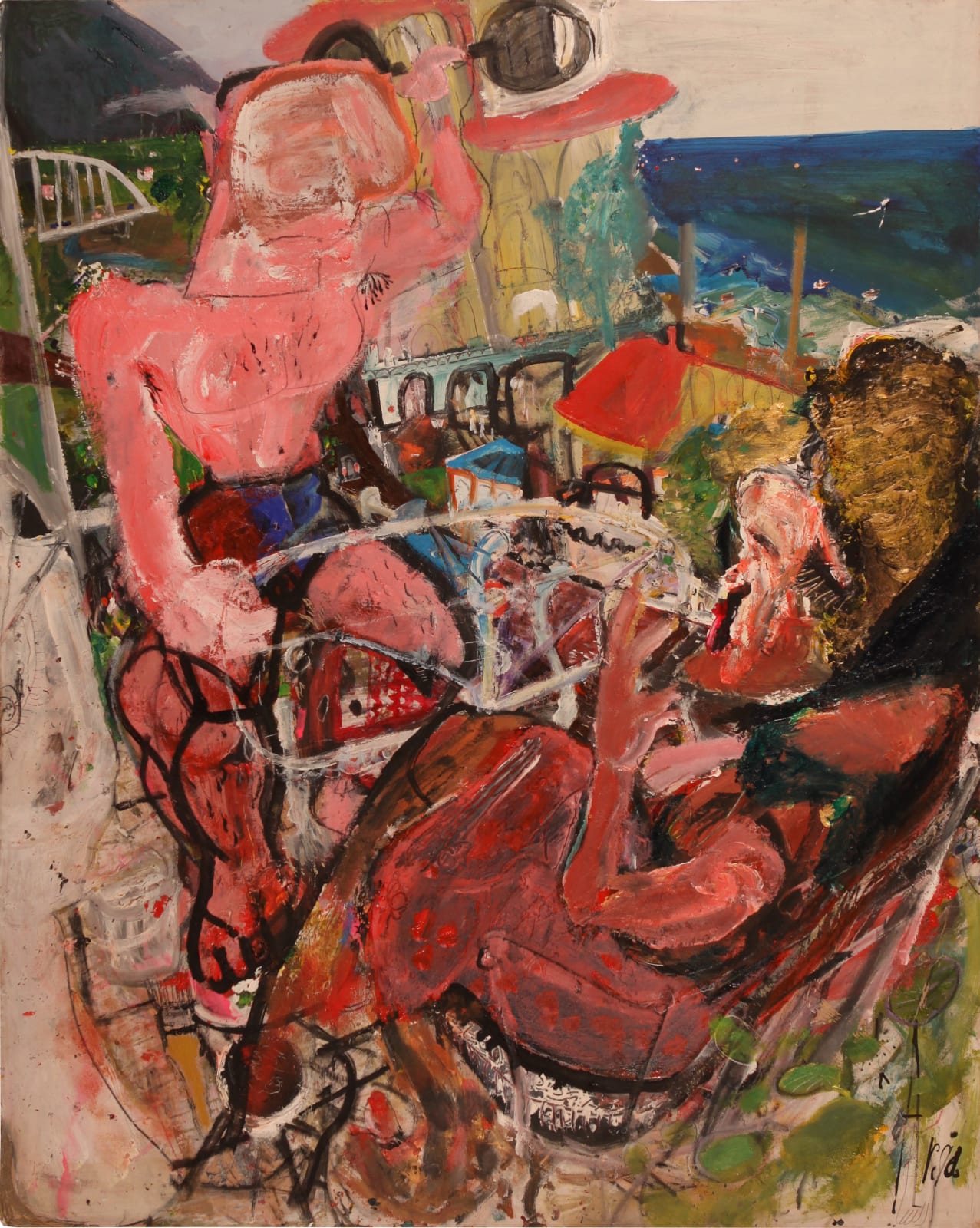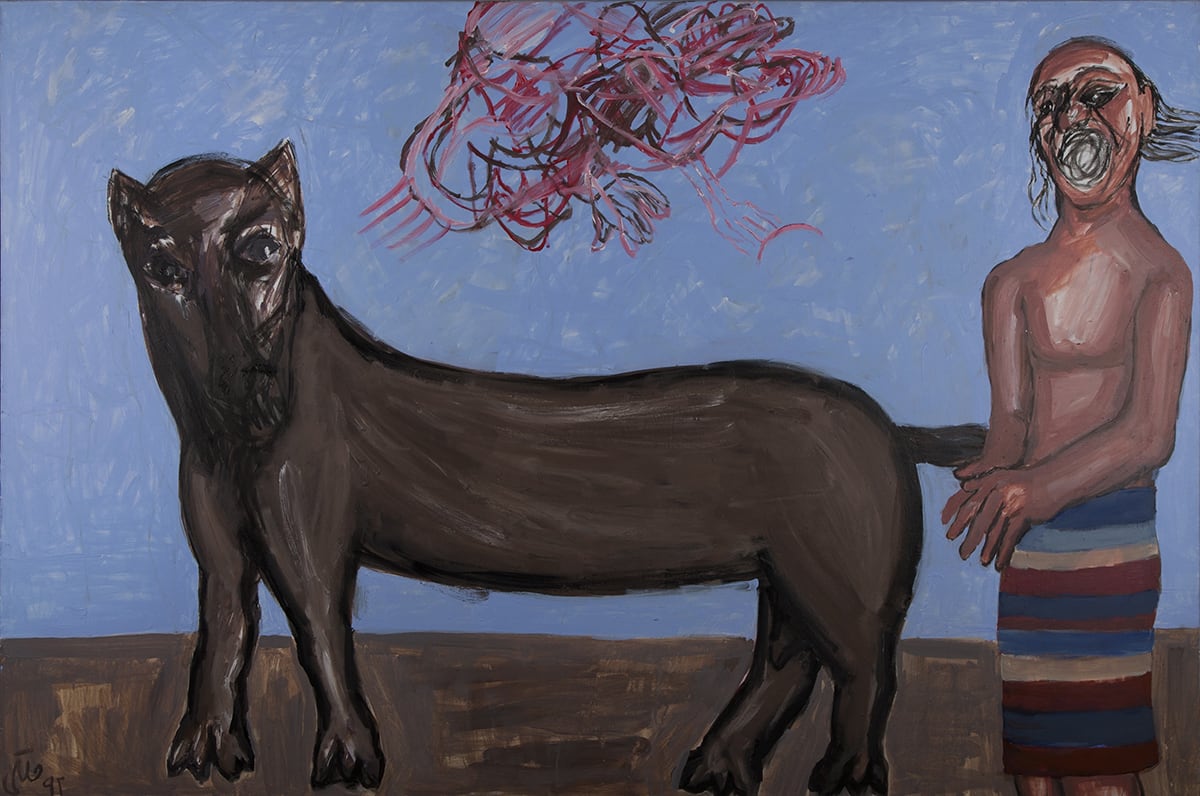"Figures": Dastan+2
Group Painting Exhibition of Works by Rana Farnoud, Ali Nassir, Farshid Maleki, Arsia Moghaddam, and Daryoush Hosseini, Selected by Behzad Nejadghanbar
Dastan is pleased to announce “Figures” at Dastan+2. “Figures” is a group painting exhibition featuring works by Dariush Hosseini, Rana Farnoud, Arsia Moghaddam, Farshid Maleki, and Ali Nassir, selected by Behzad Nejadghanber. The exhibition, marking the inaugural show at Dastan+2’s new location, will be open for public viewing from February 23 through March 9, 2018.
Sahar Asgari, writer in the field of visual arts, writes on the works exhibited: “This collection consists of works by artists whose seemingly unalike personal careers bear a certain trail of commonalities. None of these artists worked on a pre-determined plan or sketch. Although some of them had practiced abstract art for a while or for a long period; pure abstraction fell short of their expectations. In other words, it can be claimed that they are all looking for individual figures coming out of the very process of painting.
Perhaps, the starting point of these works are not far from abstract painting. In these works, the process of painting begins with lines and spots created by chance rather than necessity, without any codified plan. Meanwhile throughout the process, the generation of some forms necessitates the formation of other lines and spots. Such a relation is constantly repeated throughout the painting, one affecting the other. Just like abstract painting, there is no pre-determined narrative to interrupt this process and no boundaries or frameworks to limit and restrain the work.
Yet, these artists approach their works without any fear of figure formation, which is symptomatic of pure abstractionism. On the contrary, in the game of chance and necessity, figures are summoned up to the paintings to determine the painting by their necessary relations. Relations that bear the secret bonds between the figures, and tempt us to discover their story. What is going on between this woman and the animal? What has this figure got to do with the other? But these stories are the result of visual relations, they do not refer to any pre-existing narrative and cannot be represented with words.
The only thing to which these figures testify is their common situation, i.e. the very field of the painting, building up necessary relations between them. In this respect, there is a correspondence between our worlds calling us to find out about their story. But the instant we turn to our familiar stories, we are thrown miles away from their uncanny world.
On the other hand, delving into the artist’s intentions won’t be the best way to discover this new world, since the artist of such works is not an omnipresent narrator. It is the figures and their interactions that determine the stories. The painter is only the person who is familiar with the figures, their tensions and interactions.
Therefore, talking about the eccentricity of this world is not meant to mystify or make it unobtainable. We just need to distance ourselves from common habits and injecting the already available narratives, and like the painter, expose ourselves to these visual tensions. Then, we would be able to see, in a new way, these figures, and if be lucky, our own lives.”




















